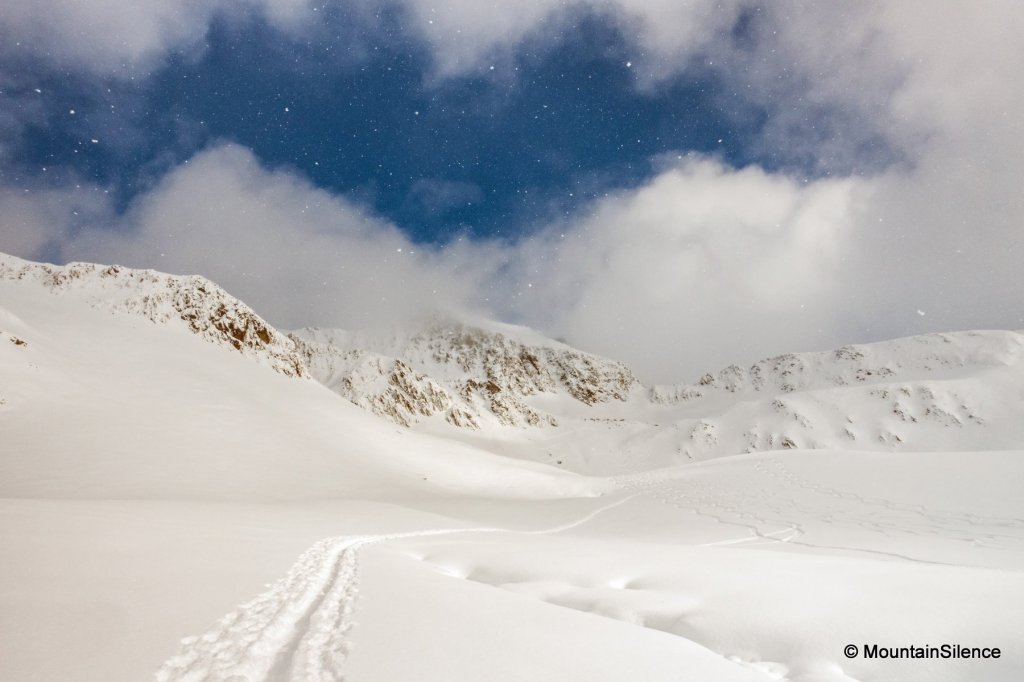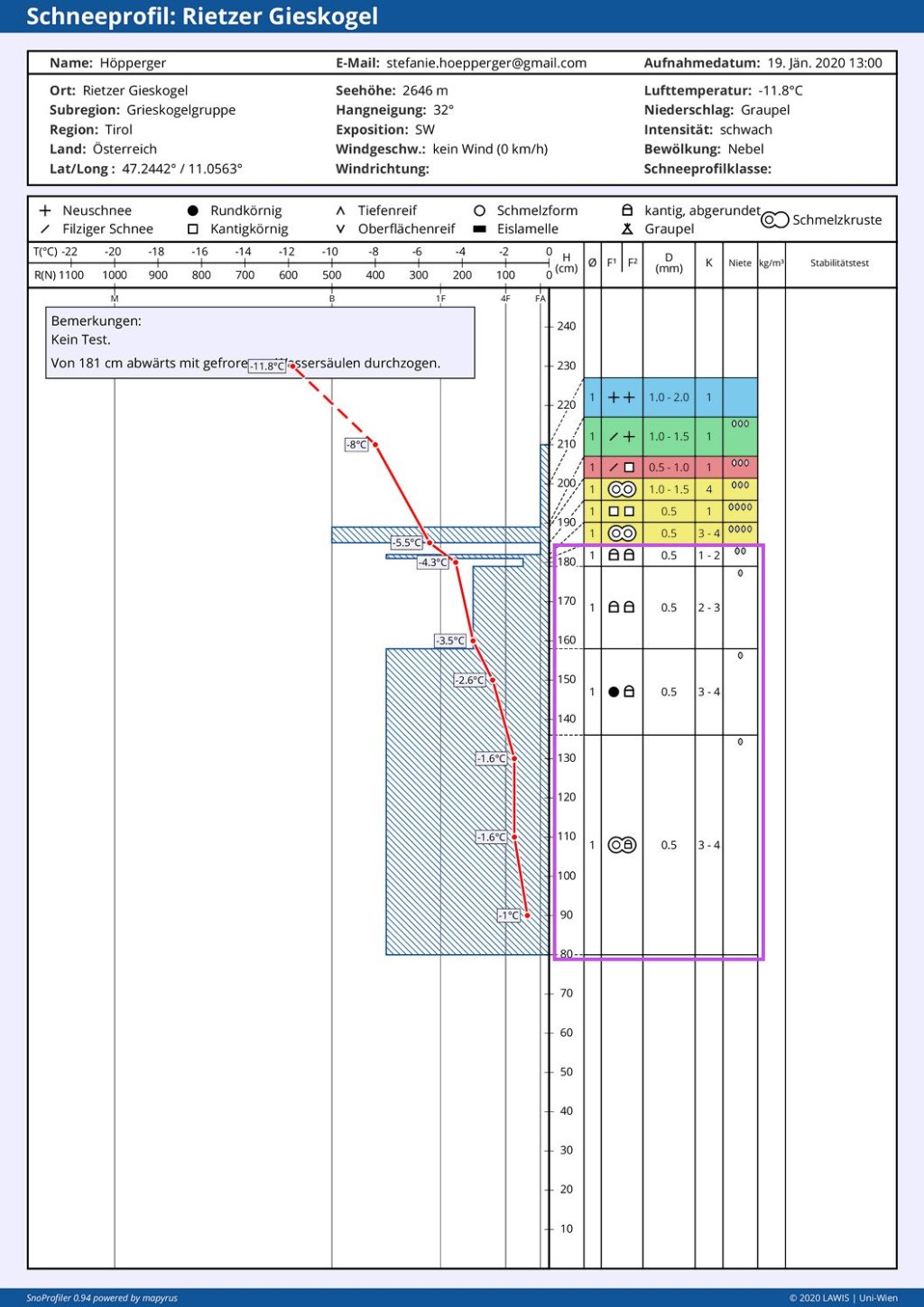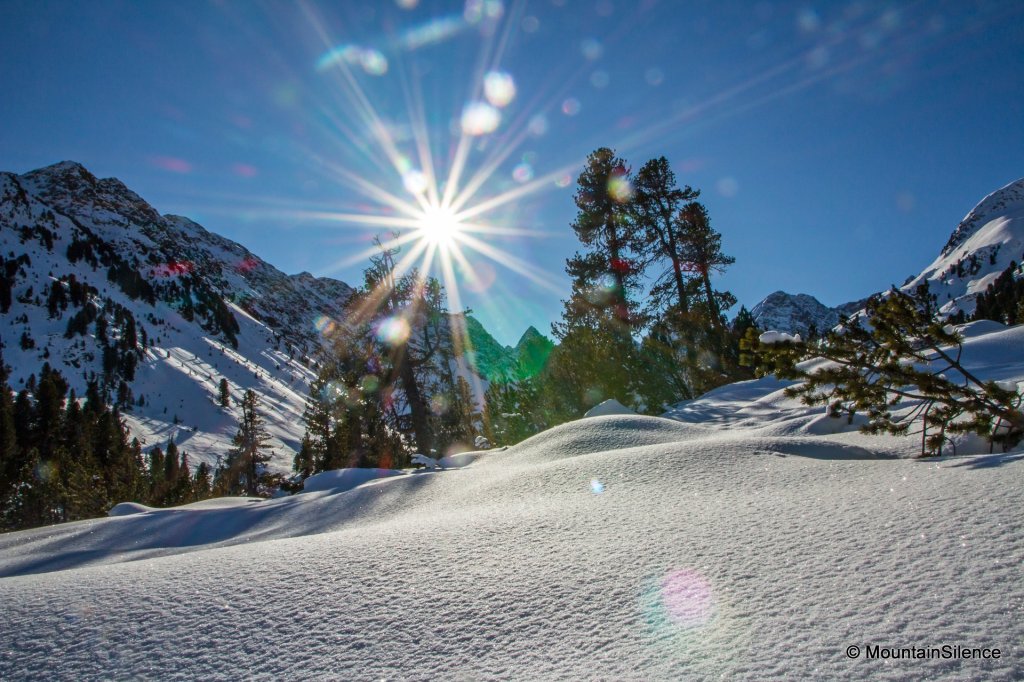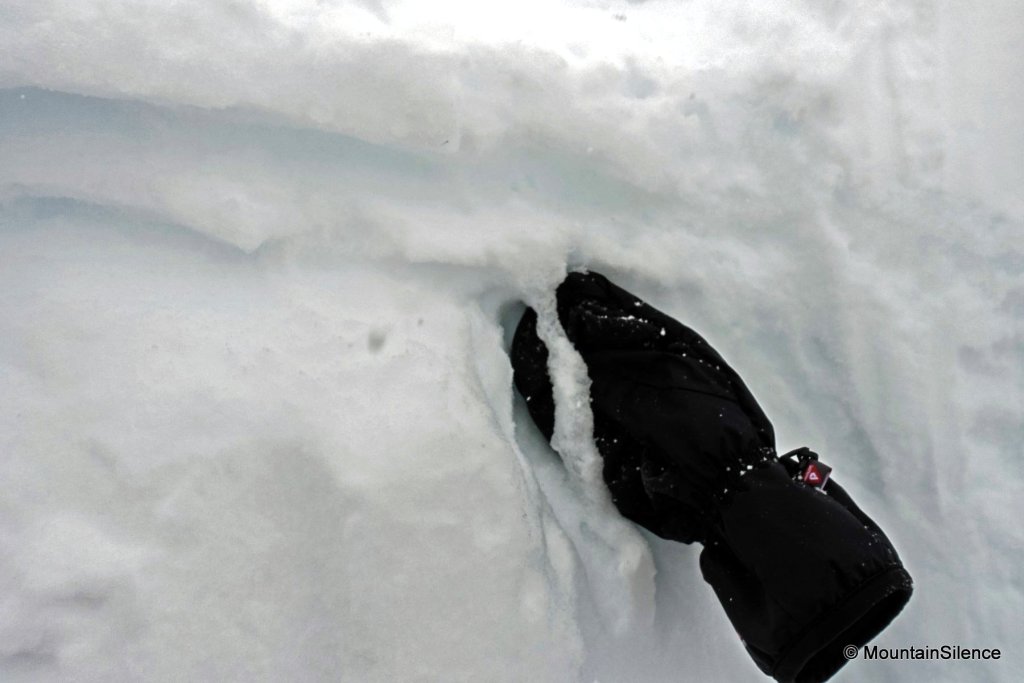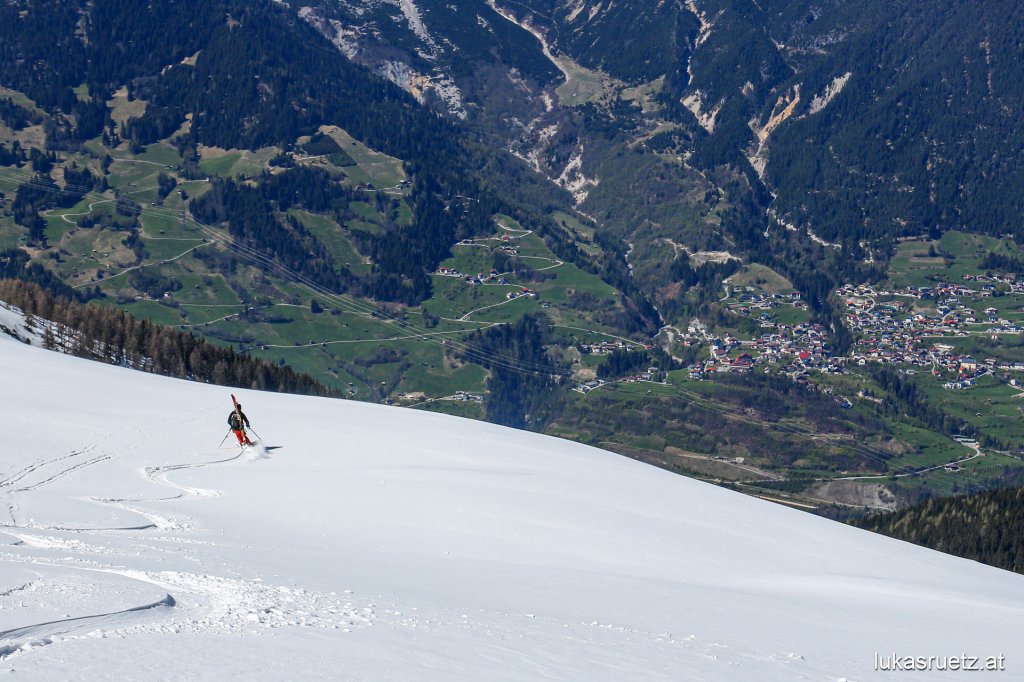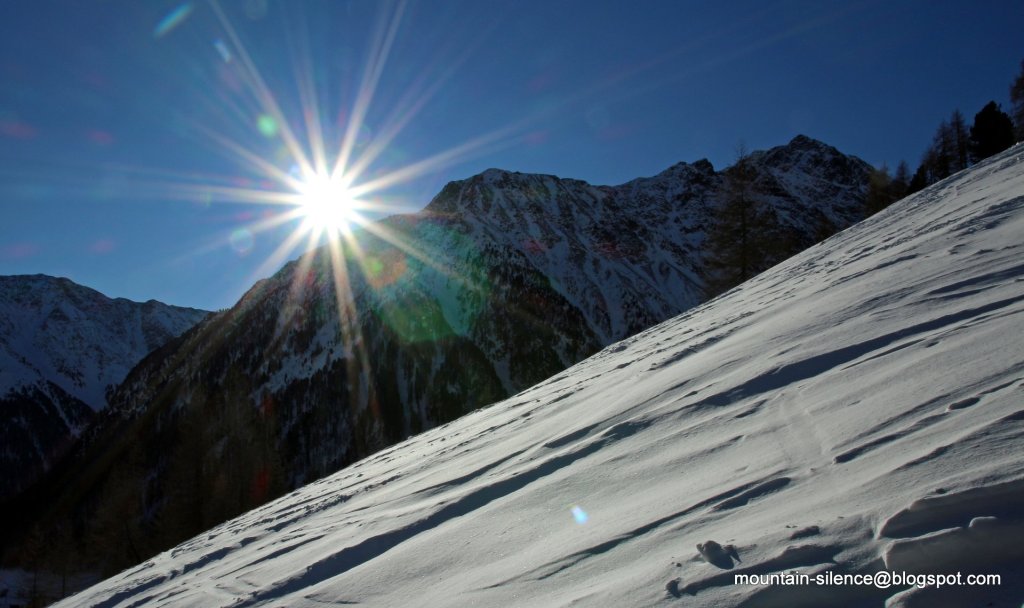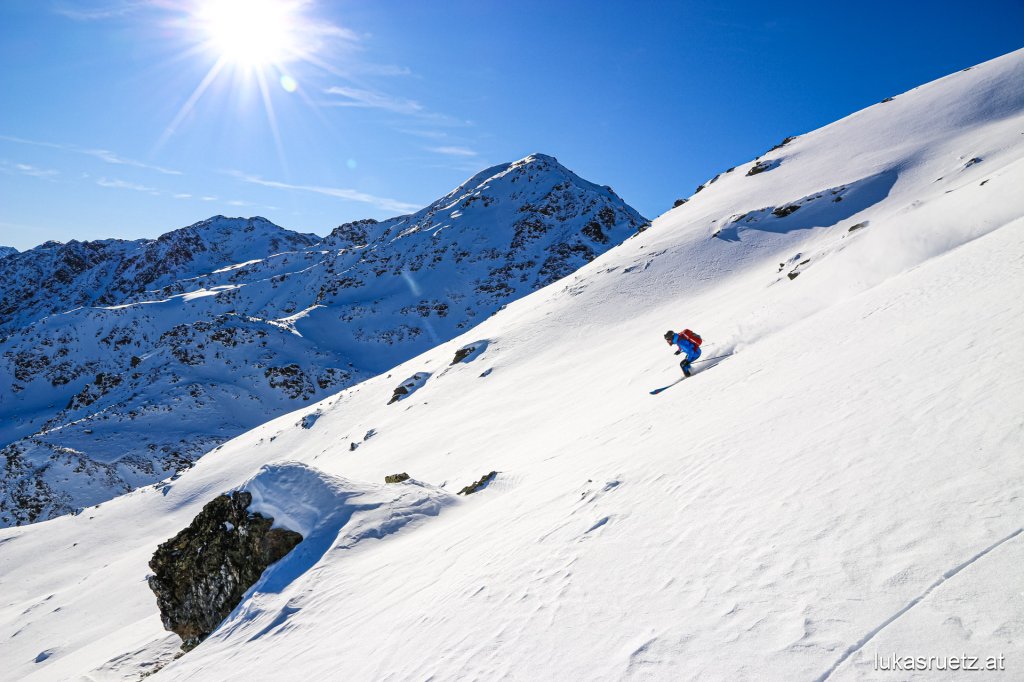You can always get a feel for what is going on in the snowpack.
Profiles down to the ground are interesting in spring, for example, when there is a risk of the snowpack becoming completely soaked, which can reactivate deeper-lying weak layers. Or if there is a pronounced weak layer near the ground that could be disturbed in areas with less snow or that you want to observe.
In high winter, on the other hand, when a thick layer of snow prevails, it is sufficient to dig a hole about 100 -150 cm deep. This is because a single skier can only disturb the snow cover up to a certain depth. With soft, unbound snow, the penetration depth is approx. 80 -100 cm, with bound snow it is max. 50 cm.
Note: The softer the snow, the greater the penetration depth. The harder the snow, the larger the surface area and shallower the penetration depth.
